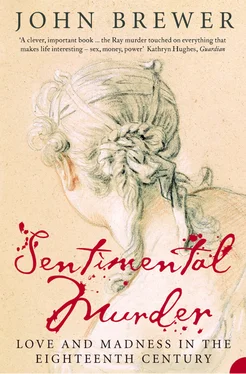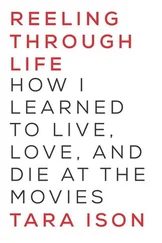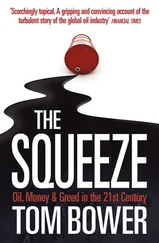But from the outset there were doubts about the authority of Dawes’s apologia. The day before The Case and Memoirs was published Frederick Booth printed a notice in the newspapers reminding readers that only he had the documents to produce an authentic ‘case’: ‘I think it necessary to be known, that no Materials for such a Publication are or can be in any Hands but my own; and that if ever it should seem to me proper to give any Account to the Public, it will be signed with my own name.’ Later apologists for Martha Ray claimed that Booth denounced Dawes’s writing as a self-interested fraud, but Booth may just have wanted to make clear that he was not, as many might suppose, the author of The Case .
Even though – or perhaps because – The Case and Memoirs was such an extraordinary success, Dawes was forced on the defensive. When the fifth edition was published in early May, he inserted a notice in the papers indignantly asserting his probity and veracity:
There being some doubts with the public of the truth of this publication, the Author of it declares, on his honour and veracity, (which he hopes are unimpeachable) that the facts contained in it are genuine, he having presented it to the public for the purpose expressed in the dedication, and no other, which he is ready to testify, if necessary, on an application to him at Mr Kearsly’s, who knows and believes him incapable of the mean artifice of obtruding on the public any thing with a view to catch the penny of curiosity 156 .
In June, a verse appeared in the Public Advertiser mocking Dawes and identifying him as the author of The Case :
The Rope, the penalty of broken Laws,
Is not more shocking than the pen of D-ws.
Both to deserve no Crime can be so great;
Yet both to suffer was poor Hackman’s fate 157 .
What made Dawes’s account so controversial? First and foremost he categorically asserted that Hackman and Ray had been not only friends but lovers. From the outset he described the two as ‘revelling in all its [loves] rites by stealth’, and enjoying ‘stolen bliss 158 ’. Because of ‘the indulgencies she had … with him’, Ray and Hackman had ‘unlimited (though illicit) gratification 159 ’. This contradicted everything the press had been told before Hackman’s death. He also claimed that Sandwich had learned of the affair and confronted Ray, who had promised to end her relationship with Hackman. But, he claimed, her passion for him was too great and she even agreed to marry her young lover. Only his departure to Ireland delayed the ceremony, and while they were apart, ‘they corresponded in the most affectionate manner by every post 160 ’. So Dawes depicted Hackman and Ray as being bound by mutual love and destined for conjugal felicity. Hackman’s expectations of Ray were portrayed not as delusional but as eminently reasonable.
What, then, had gone wrong? In his dedication to Lord Sandwich and in the main body of his narrative Dawes placed the blame on Galli and Sandwich. Galli, according to him, had taken money from Hackman so that the couple could continue to meet without Sandwich’s knowledge. But, after a while, Galli ‘(whether under the management and direction of his Lordship, who wished to break off the connexion at all events, or otherwise, we do not know) informed Mr Hackman that all future visits from Miss Reay would be dispensed with, for that Lord S––– was too well acquainted with their amour to bear with it longer 161 ’. She is also reported as adding, ‘That Miss Reay had tired of him, and had resolved to quit him for the sake of another gentleman, who was much more dear to her 162 ’. Here was the full-blown version of Galli’s betrayal.
In the early editions of The Case and Memoirs Dawes says nothing about Ray’s own view of the matter. The reader is left to assume that she still loved Hackman, even when temporarily unable to see him. Perfidy perhaps lay with Sandwich and certainly blackened the character of Galli. But no matter where responsibility was placed, the act of warning off Hackman was the turning point in the plot. It triggered ‘his despair and grief’, transforming his character: ‘he was an altered man … he was agreeable, sprightly and affable; but on a sudden he changed himself to a pensive and grave deportment’. He grew increasingly subject to a melancholy ‘originated on that occasion, which, by continually brooding over, encreased and inflamed his wretched mind 163 ’.
Dawes included in his account a letter from Hackman to Ray which, ‘with one other, (a copy whereof is in the hands of his brother-in-law) is the only one he did not cancel 164 ’. In it Hackman pleaded with Ray to relieve him of ‘his pleasing pain’. He mentions their meeting secretly ‘at Marylebone, and other places’. He calls on her to honour her promise of marriage, urging her to bring her youngest child with her to live a life of rural felicity as a cleric’s wife. ‘I know 165 you are not fond of the follies and vanities of the town. How tranquil and agreeably, and with what uninterrupted felicity, unlike to anything we have yet enjoyed, shall we then wear our time away together on my living.’ Full of despair, he threatens Ray with the prospect that if she does not marry him he will die: ‘For God’s sake let me hear from you; and as you love me, keep me no longer in suspense, since nothing can relieve me but death or you 166 .’
The deception of others, continued Dawes, plunged Hackman into this melancholia, but only when he saw Martha Ray with another man in the playhouse on the night of the murder did he decide on suicide. ‘Gloomy, melancholy, and outrageous, at the injuries he had conceived, which exceeded all human knowledge to explain’, he determined to shoot himself ‘in the presence of a woman, whose supposed infidelity had brought him to a misery and despair not to be described by words 167 ’. And only when he looked into Ray’s face as she tried to enter her coach did he think of killing her – ‘he concluded it would be best for both to die together 168 ’. This was no premeditated crime but an act of ‘momentary phrenzy [sic] 169 ’.
The lawyer in Dawes wanted to acquit Hackman of murder, though he could not, of course, deny the killing. In his long ‘Commentary on his Conviction’, Dawes absolved Hackman of any felonious intent to kill Martha Ray. Murder, he reminded the reader, is distinguished as a crime by proof of prior intention and malice: ‘It is the wickedness and malignity of the heart which raises the crime of murder, and not simply the act that kills 170 .’ Yet Hackman’s suicide note, with its request to his brother-in-law that he care for Ray after Hackman’s suicide, showed ‘that he did not kill her with an express or previous intention, but from a momentary phrenzy, which overpowered him, after he had resolved to destroy himself only 171 ’. His intent to do away with himself, Dawes conceded, was ‘a felonious action and disposition of mind 172 ’ and it was on these grounds that Blackstone in his summary of the case pressed for Hackman’s conviction. But Dawes argued that ‘as he was found guilty of murder by malice implied and not expressed, he deserves not to be classed among common assassins and murderers 173 ’. He also pointed out that if Hackman had succeeded in killing himself, he would have been condemned for an act of lunacy. If he tried to kill himself in such a state, did not this condition apply as much to his killing of Ray, which was thus not a responsible act, and therefore not murder? In his conclusion, Dawes blamed the whole affair on Hackman’s passion: what began as a virtue ‘hurried him, when born down by disappointment, ingratitude and inconstancy, to the vice that concluded his unconquerable misery, while either himself or Miss Reay were living 174 ’. Only after the crime was he able to recuperate, struggling successfully to control his feelings and face his fate.
Читать дальше












